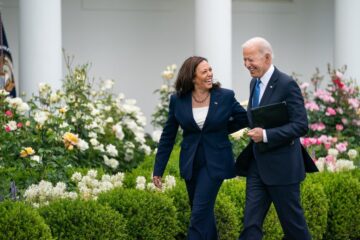Welcome back to Week 54 in my weekly reports analyzing the Covid-19 pandemic and its effects on the country and higher education. For those of you reading this on my blog, Off the Silk Road, I have also launched a newsletter, where these reports can be sent directly to your email each week. Click here to subscribe.
Last week, we discussed vaccination in the context of the Johnson & Johnson pause (which has now been lifted) as every American adult is now eligible for a vaccine. This week, we will examine the “vaccine enthusiasm frontier” as many states are currently seeing thousands of available appointments and many communities remain largely unvaccinated.
A national look
We must begin by acknowledging this week’s verdict by a jury in Minneapolis to convict former police officer Derek Chauvin on all three counts relating to the murder of George Floyd. America has a long way to go in its fight for racial justice, but this is certainly a productive step.
Although variants are still spreading, the U.S. continues to see declining cases on a national scale, with the most recent 7-day average of new cases holding at 59,562.
While the U.S. may be winning its battle against the virus, India is an example of the virus spreading unchecked. India has recorded over 300,000 new cases each day over the past few days, most certainly an undercount due to lack of testing. Hospitals have run out of oxygen and some of the metal in crematoriums has started to melt due to being hot for so long burning dead bodies. People in the ICU are better off as they may have an increased chance of even accessing oxygen. Families have taken to Twitter or other online sites to solicit plasma and oxygen for their families. This tragic situation in India is due to a failure on behalf of the government to expect a resurgence and as a result, the medical system has collapsed. Some of the U.S.’ prominent medical experts, such as Dr. Ashish Jha at the Brown School of Public Health, have advocated for the U.S. to send vaccine doses or raw materials to India. Vaccinating the world should be our top priority.
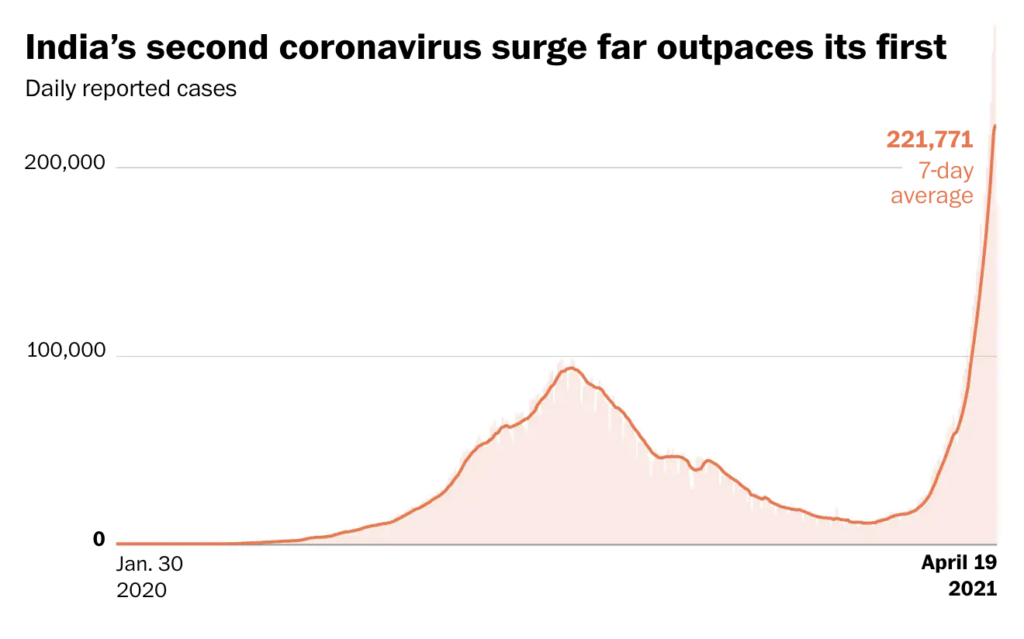
Let’s take a look at some of the latest scientific developments:
- In a study published in Nature, researchers looked at medical records of more than 73,000 people across the United States whose coronavirus infections did not require hospitalization. Between one and six months after becoming infected, those patients had a significantly greater risk of death — 60% higher — than people who had not been infected with the virus.
- An MIT study showed that people who maintain 60 feet of distance from others indoors are no more protected than if they socially distanced by just 6 feet.
- According to a CDC report from Alaska, which had a testing or quarantine policy for travelers on arrival, 951 people tested at airports were positive (0.8%). This is a rate of one per 406 arriving travelers.
- 47 passengers on Vistara flight UK6395 from New Delhi to Hong Kong on April 4 have now tested positive for Covid-19. As a result, the Hong Kong government has banned all flights from India.

- A CDC report found that among 3,171 nonhospitalized adult Covid-19 patients, 69% had one or more outpatient visits 28–180 days after the diagnosis.
- Test results from the NBA bubble published in JAMA found that only 1% tested positive of 3,648 individuals. Of those who did test positive, 92% had antibodies and there was no secondary transmission.
- Just weeks into the climbing season, symptoms of the coronavirus have been found at Mount Everest’s base camp.
- In non-Covid science news, Oxford researchers found that a malaria vaccine is 77% effective in African children.
- According to a study published in Pediatrics, pediatric vaccine uptake decreased dramatically during the Covid-19 pandemic, meaning fewer kids have been coming in for routing vaccinations.
- The issue of outdoor mask mandates has now come back into the conversation. Aerosol scientist Linsey Marr published a useful guide in The New York Times on how to mitigate risk outdoors.
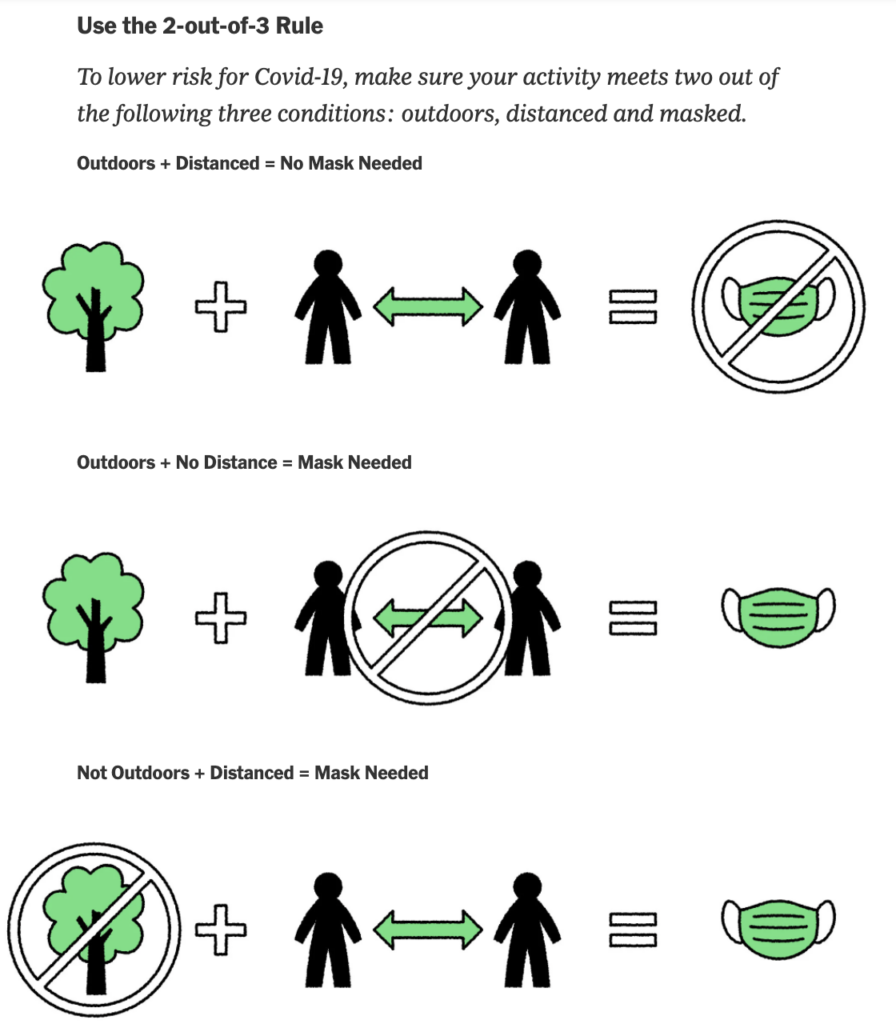
Major milestones in the vaccine rollout were reached this week. The Biden administration reached its goal of 200 million shots in just 92 days and the world has now administered 1 billion doses. Every adult in the U.S. is now eligible for a vaccine.
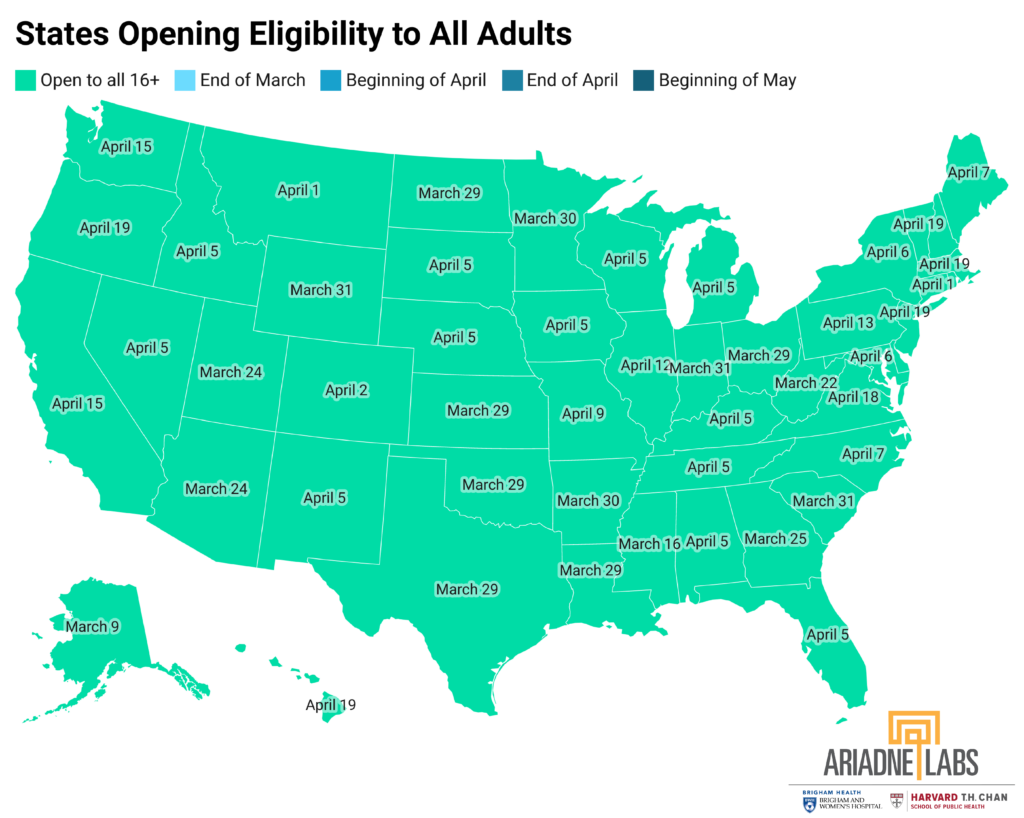
While every adult is now eligible and vaccine open season has now begun, we are seeing first signs of hitting a “vaccine enthusiasm frontier.” As I explained in a Twitter thread earlier this week, the U.S. needs a vaccination rejuvenation. Daily doses administered is declining, which is only partially a result of the Johnson & Johnson pause. Vaccinating the next 50% of Americans is going to be a great challenge, as we need to now move away from mass vaccination sites and distribute doses everywhere. We need to greatly augment walk-in appointments and make it as easy as possible to get a vaccine. That way, those who may be slightly hesitant will be more likely to get it. An analysis I conducted earlier this week shows a correlation between vaccine hesitancy and open pharmacy appointments, as seen on this dashboard here.
One of the major hesitant groups is Trump voters, as seen from this Morning Consult poll. Additionally, many seniors in rural areas have still not been vaccinated, pointing to possible access and hesitancy issues.
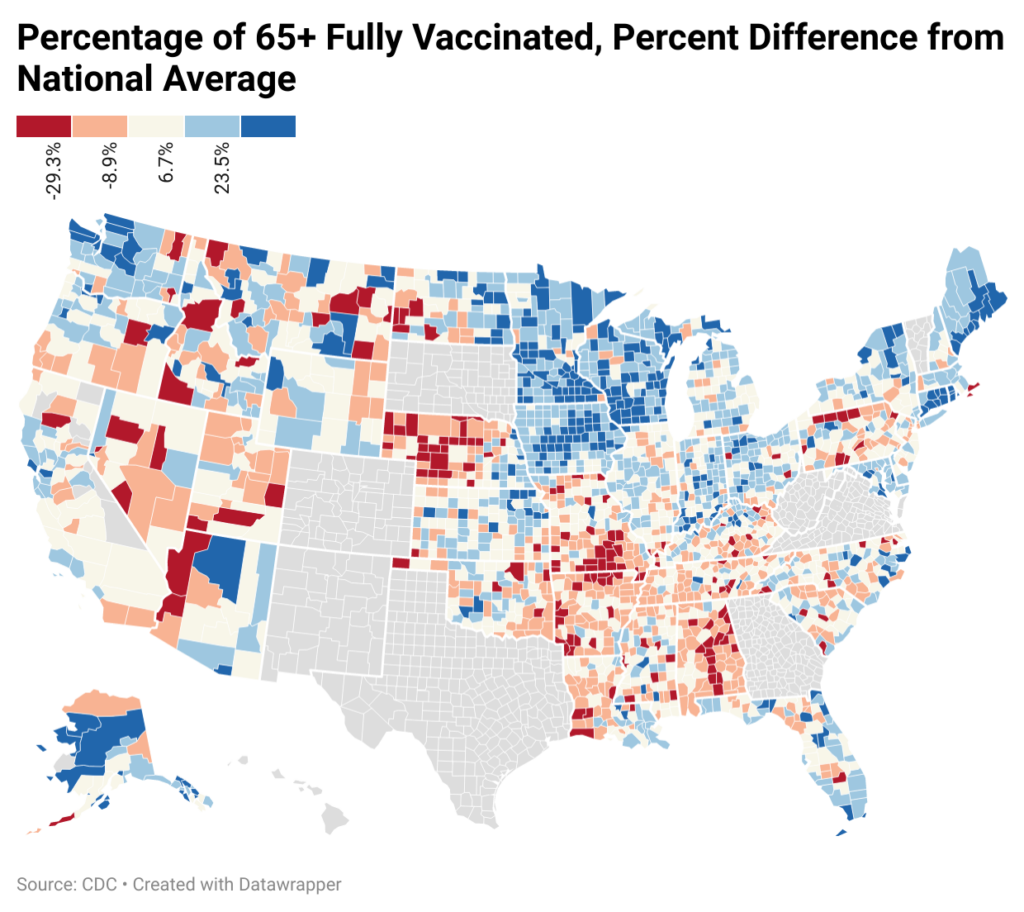
What does this all mean? As seen from this Kaiser Family Foundation analysis, the scales have tipped in many places and supply now exceeds current demand. However, we cannot let up now. Some counties are beginning to turn down vaccine shipments. In Mississippi, CNN’s Martin Savidge reports that the state’s website has 74,000 open appointments far into May. At one drive-thru site, just 275 were scheduled. Since we now have adequate supply, we can now make choices we could not before — sending vaccine doses to all areas and settings (including primary care). Doses administered have now decreased by 12% compared to last week. While we may not ever see the record numbers of 4+ million doses per day again, we now need to conduct outreach to ensure we vaccinate as many communities as possible.
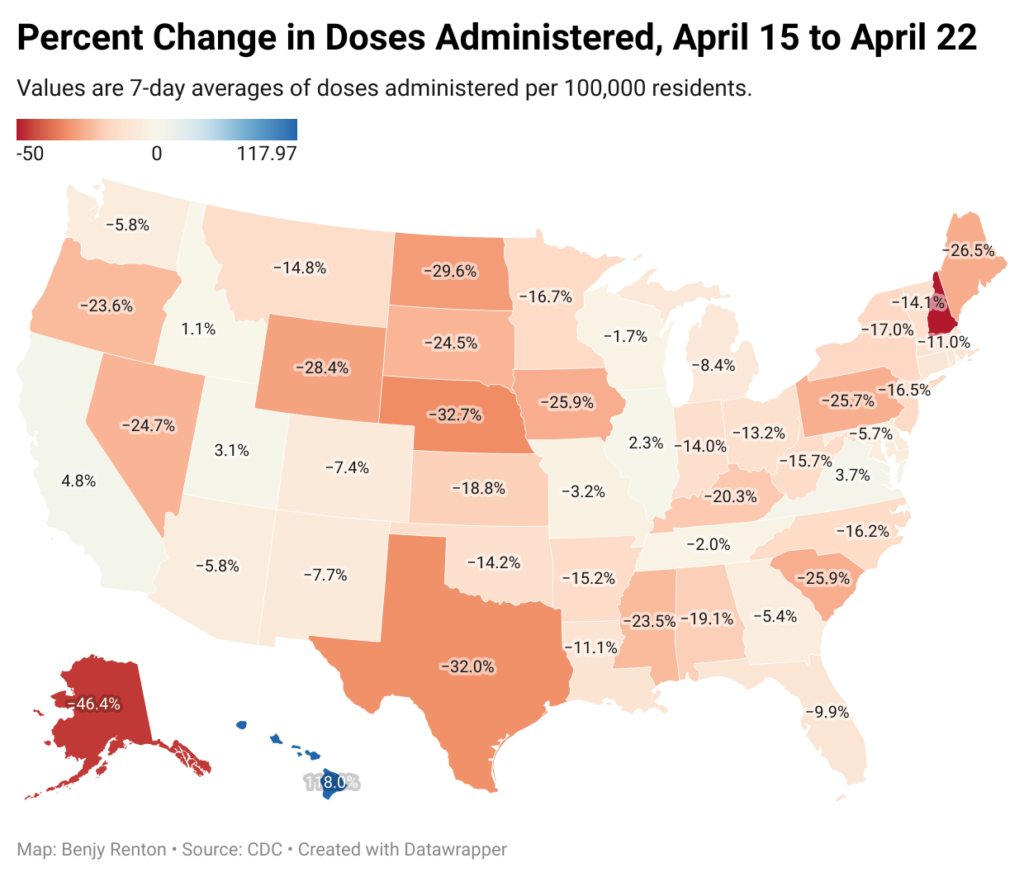
One of the major tools now back in our arsenal is the Johnson & Johnson vaccine, whose pause has been lifted as of this past Friday night. After careful deliberations, the CDC’s Advisory Committee on Immunization Practices decided that the benefits of the vaccine greatly outweigh the risks, as seen on this slide from Friday’s meeting.
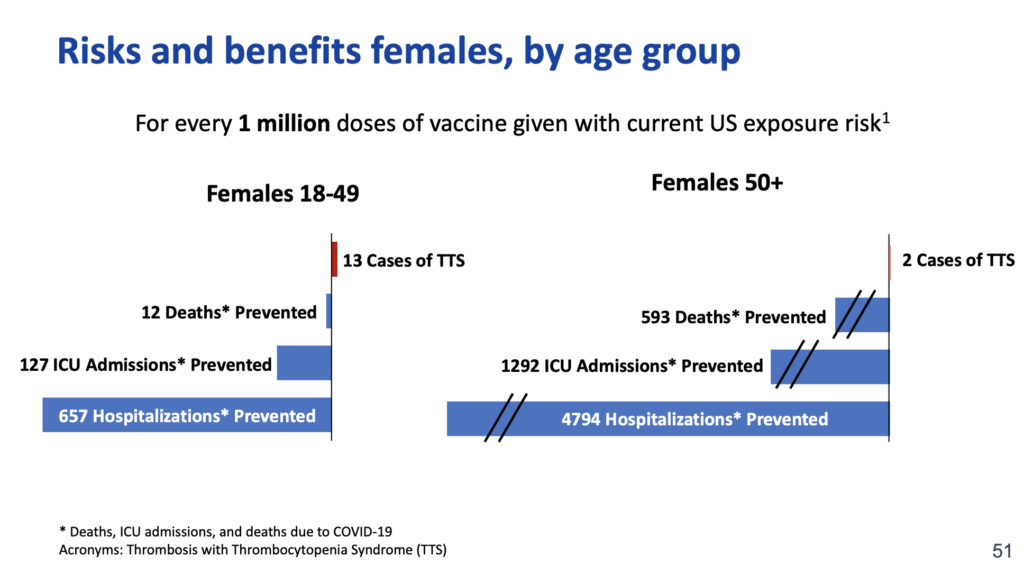
With over 10 million doses on hand in state and federal channels, we need to deploy these immediately. The good news is that polling data show that vaccine confidence has not changed dramatically as a result of the pause. Data from the de Beaumont Foundation found that 76% percent said the J&J pause does not decrease their likelihood of getting vaccinated and 87% of those who have been vaccinated said they would “definitely” make that same decision again.
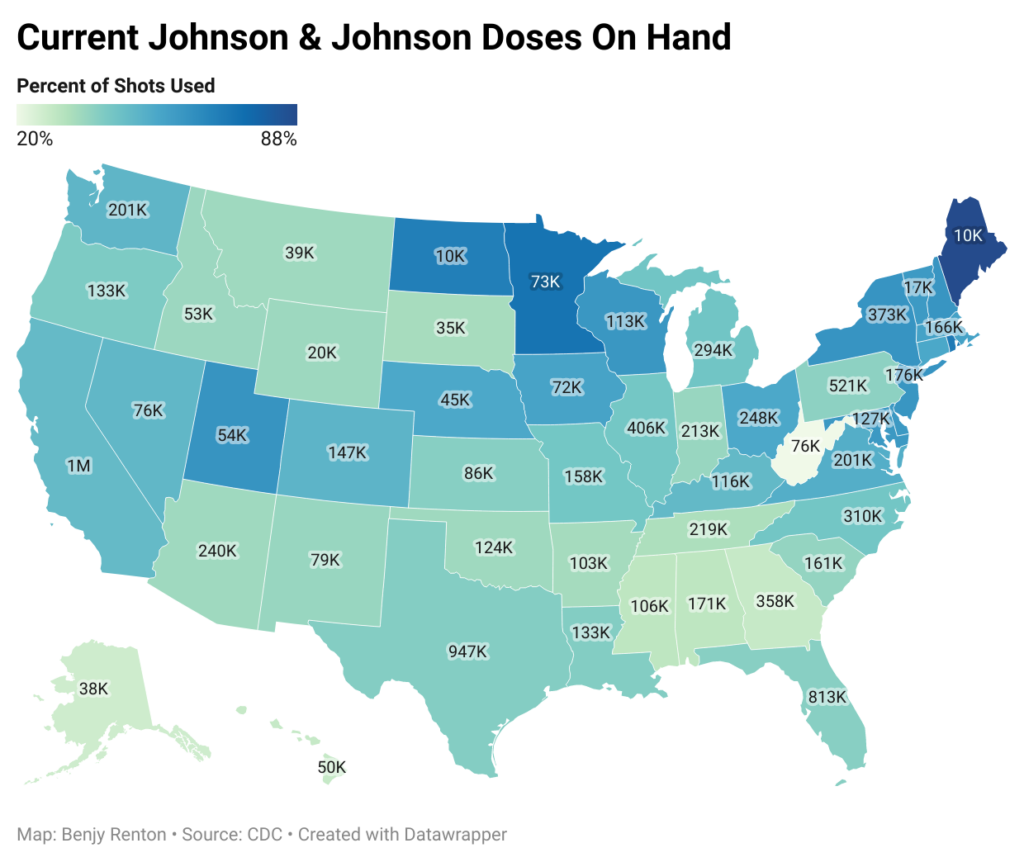
A few other updates on vaccines:
- We are seeing more studies on breakthrough infections, which all provide useful context. At a nursing home in Kentucky where most of the residents were vaccinated but only around half of staff were, a CDC report found one unvaccinated and infected staff member led 22 cases among residents and employees who were already fully vaccinated and one death in a vaccinated resident. At a nursing home in Chicago, 22 breakthrough infections occurred, ⅔ of which were asymptomatic. At Rockefeller University, there were 2 cases out of 417 vaccinated individuals.
- One of the largest reports on Covid-19 vaccination in pregnancy bolsters evidence that it is safe, although the authors say more comprehensive research is needed. The preliminary results are based on reports from over 35,000 U.S. women who received either the Moderna or Pfizer shots while pregnant. Their rates of miscarriage, premature births and other complications were comparable to those observed in published reports on pregnant women before the pandemic. This comes as the director of the CDC now recommends pregnant women get the vaccine.
- The White House is currently on a media blitz to encourage individuals to get vaccinated, including Dr. Anthony Fauci on Snapchat.
- “We have all the tools to tame this pandemic everywhere…. It comes down to a simple choice: to share or not to share,” Director-General of the World Health Organization Dr. Tedros Adhanom Ghebreyesus writes. “Whether or not we do is not a test of science, financial muscle or industrial prowess; it’s a test of character.”
- President Biden announced a tax credit for employers offering Covid vaccine-related paid leave as some employees have already offered paid time off to get vaccinated. These actions will be critical in vaccinating the working-age population, many of whom believe the costs (in lost work time) are too great to get vaccinated.
- The latest COVAX allocations are out, which includes a new round of the Pfizer vaccine to be delivered to participants in the next three months. On average, participating countries now have enough vaccine allocated to fully vaccinate 3.4% of their populations.
- “Immigration policing, whether real or perceived, and public health never mix well,” Dr. Rebecca Weintraub and Dr. Harald Schmidt write. “Empathy, equity, and public health all require that we remove, as much as possible, barriers for immigrant populations.”
- Results from Republican pollster Frank Luntz’s second focus group revealed that hesitancy is still present in many Trump voters. Their messages: Stop talking about the possibility of coronavirus booster shots. Don’t bully people who are vaccine holdouts. And if you’re trying to win over skeptics, show us anyone besides Dr. Fauci.
- Women are getting vaccinated at a far higher rate — about 10 percentage points — than men, even though the male-female divide is roughly even in the nation’s overall population.
- Both the Pfizer-BioNTech and Moderna vaccines will effectively prevent serious illness and death from the B.1.526 variant first discovered in New York, two independent studies suggest.
- Nearly 8% of those who have received their first dose have missed their second dose of the Pfizer or Moderna vaccines, according to a report from The New York Times.
- One Covid-19 vaccine technology which may be used is so easy to produce you could make it in your kitchen.
- Exasperated Canadians are watching their U.S. neighbors get vaccinated faster. Prime Minister Justin Trudeau has said every Canadian who wants a vaccine will have one by the end of September, months behind the U.S.
- Georgia health officials have been using older population estimates, making the percentage vaccinated appear higher.
- On Thursday, after downplaying the vaccine for weeks, The New York Post put “GET VAXXED” in big letters on its front page. “With only half of NYers jabbed,” the paper says, “we need you to help get us back to normal.” A Staten Island resident was originally “skeptical” about getting the Covid-19 vaccine — but when he saw the former president on the cover of The Post Friday encouraging everyone to get the jab, he decided to roll up his sleeves. Your turn, Tucker Carlson.
- Wisconsin Senator Ron Johnson has solidified his position as the dumbest member of the Senate, now saying the U.S. should have only distributed the vaccine to the most vulnerable. “The science tells us that vaccines are 95% effective. So if you have a vaccine, quite honestly, what do you care if your neighbor has one or not? I mean, what is it to you?” Johnson asked in an interview with conservative radio host Vicki McKenna.
- New Yorkers can now get vaccinated under the big whale at the American Museum of Natural History. For those asking, the big band-aid came from Whalegreens.

Happy Bleach Day to all those who celebrate. One year ago on Friday, the former president went into the White House briefing room and encouraged the American people to inject bleach into themselves to kill the coronavirus. “It arguably changed the course of political history,” POLITICO writes.
Let’s move on to our discussion of higher education.
Higher education
As the Johnson & Johnson vaccine pause has now been lifted, it remains unknown if colleges will now resume its administration with student vaccinations. Regardless, college students continue to be vaccinated in large numbers. 61% of the Syracuse University student body is reporting that they have been fully vaccinated, according to Vice Chancellor J. Michael Haynie.
The tides on college vaccination mandates are turning, with some of the nation’s largest public institutions announcing they will require vaccination for all students on campus this fall. The University of California system announced it expects to require vaccines if the FDA grants full approval of the vaccines by the fall. The California State University system enacted a similar policy — particularly notable as this system was among the first of many colleges last summer to announce it will remain all-remote for this past fall. Our current count of colleges requiring vaccines for the fall stands at 70.
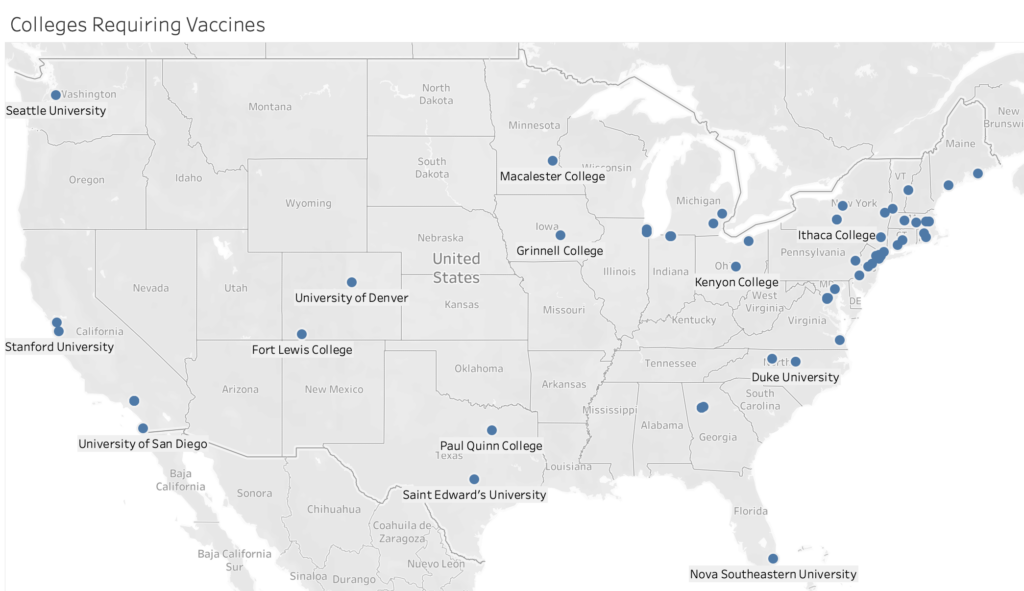
Here’s a roundup of this week’s higher ed news:
- In what appears to be the first formal challenge to a college requiring Covid-19 vaccinations for its students, anti-vax group Informed Consent Action Network has sent a letter to Rutgers University asking it to rescind its mandate. It has also asked Princeton University to withdraw its mandate. Expect many of these to come.
- The Alligator, the student newspaper at the University of Florida, spent two months analyzing and comparing state, county and university data. It found that the number of cases and tests reported by UF do not match the cases in state reports.
- Researchers at Texas A&M University have detected a new SARS-CoV-2 variant, named BV-1, in a student.
- As colleges offer students freebies and financial incentives to get a Covid-19 vaccine, scholars and campus leaders are divided on whether paying students to get vaccinated is equitable — or ethical.
- “Ask for the damn extension. Take up space. There is not a limited number of extensions. You are not taking an appointment from someone else by demanding a spot for yourself,” the editorial board at the University of Princeton writes. “If an opportunity to make these next few weeks less miserable for you arises, take it. And don’t you dare apologize for it.”
The Good Stuff
Let’s roll the clips of the good stuff. In my usual tradition, I feature my favorite stories from the week. Here are my Top 10.
- Rest in peace to former Vice President Walter Mondale, who passed away earlier this week at the age of 93. His most enduring contribution may well have been the invention of the modern vice presidency, and his creation of a template that has been followed to some degree ever since.
- Congratulations to CNN’s chief medical correspondent Dr. Sanjay Gupta on 20 amazing years at CNN. Thank you for your tireless work educating, informing and inspiring.
- Supply chain issues due to the recent Suez Canal blockage and the popularity of garden centers during lockdown are causing a shortage of garden gnomes in England.
- NASA has now completed the first flight on another planet with two flights of its Mars helicopter. Its Perseverance rover made oxygen on the Red Planet. “Whatever…I just made coffee in the hallway,” CNN anchor John Berman quipped.
- A hiker in California was rescued after an online ham radio operator used a picture to pinpoint his location.
- The New York Times published an engaging interactive on how the pandemic did and did not change where Americans move.
- More than 800 volunteers performed thousands of hours of work to make the COVID Tracking Project’s regular data operation possible, and in a new post the project takes an in-depth look into its volunteers.
- White House press secretary Jen Psaki on Friday brought homemade cookies baked by her mother-in-law for White House reporters to enjoy.
- By bearing witness — and hitting ‘Record,’ taping George Floyd’s murder — 17-year-old Darnella Frazier may have changed the world.
- A seven-year-old surprised her grandma for her 75th birthday after spending 14 months apart due to Covid-19. “My heart exploded,” says Bonnie Pitman, the grandmother, who shed tears of joy in the heartwarming moment. We need more of these moments as a way to encourage Americans to get vaccinated.
Watch a 7-year-old surprise her grandma for her 75th birthday after spending 14 months apart due to Covid-19.
— Cuomo Prime Time (@CuomoPrimeTime) April 24, 2021
"My heart exploded," says Bonnie Pitman, the grandmother, who shed tears of joy in the heartwarming moment. pic.twitter.com/mIdH5nR05o
Conclusion
As the U.S. appears to be on the verge of dodging the major bullet of rapid variant spread and heading for the “pandexit,” it faces one last hurdle: convincing enough Americans to get vaccinated. The data are clear: in many communities, some predominately Republican and rural, appointments are going unfilled and vaccination rates remain low. We need a course correction, which starts on a grassroots level, to meet Americans where they are. The next few weeks are critical to readjusting demand channels and increasing daily output. We need to flood the country with vaccines. Once those who are hesitant see how easy and accessible it is to get a vaccine, they will be more likely to take it. The health of our nation this summer is up to all of us.
I’d like to thank all the student journalists with whom I have the pleasure of working. In the next weeks and months ahead, they will become vital in chronicling their colleges’ paths forward for the spring and beyond. Support their work by reading it.
My best to all for good health.
Like what you see? Don’t like what you see? Want to see more of something? Want to see less of something? Let me know in the comments. And don’t forget to subscribe to the weekly newsletter!
For more instant updates, follow me on Twitter @bhrenton.

